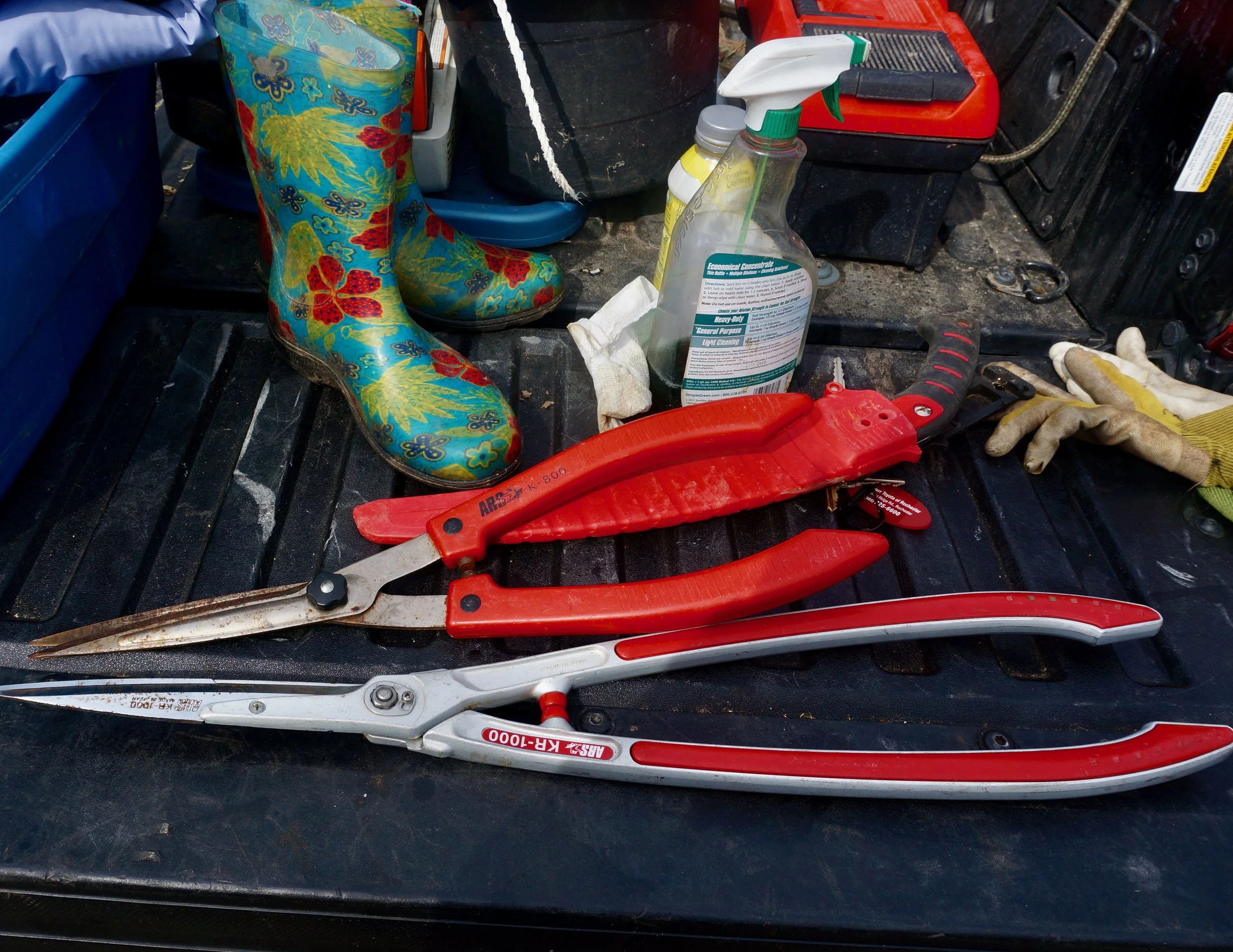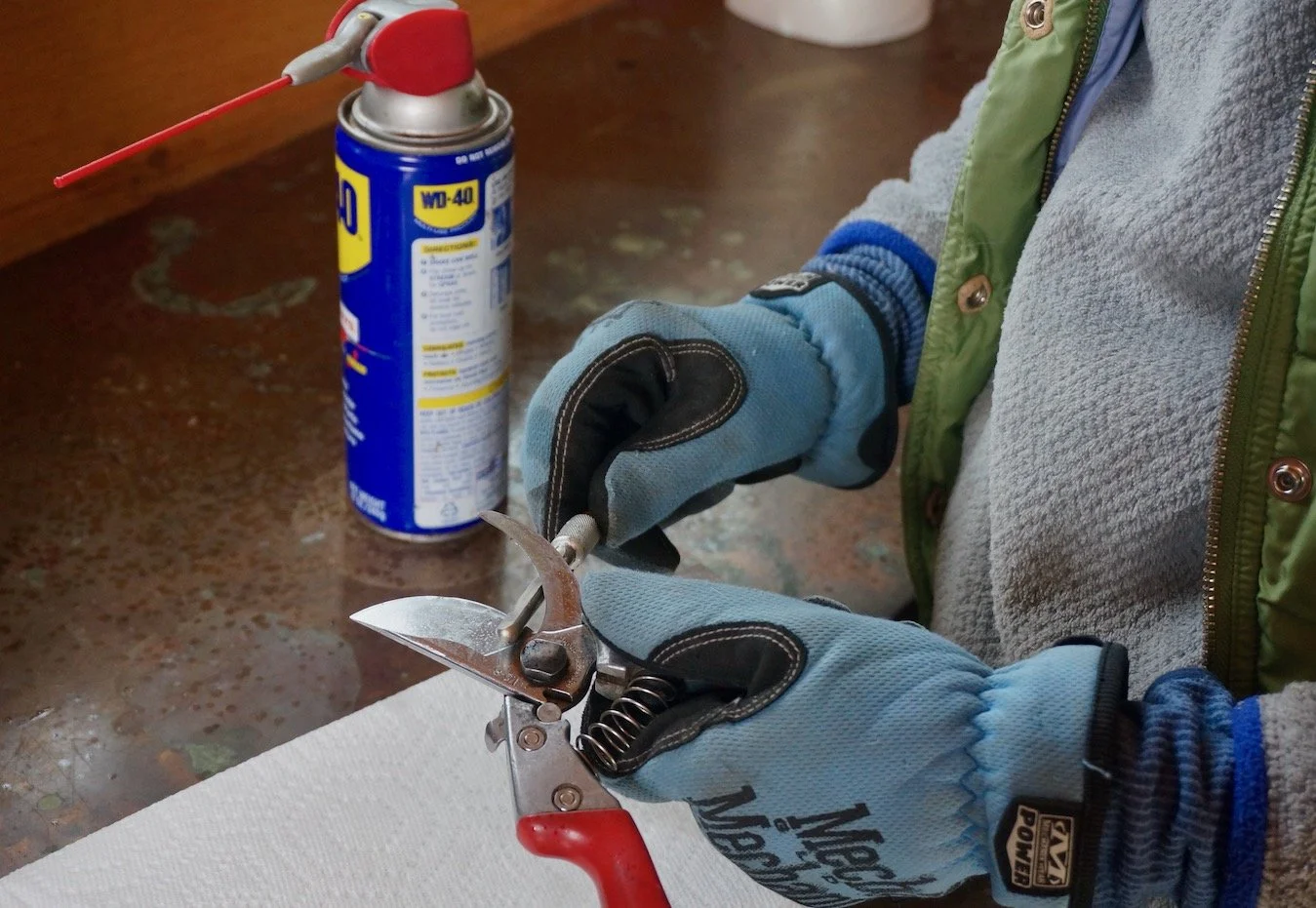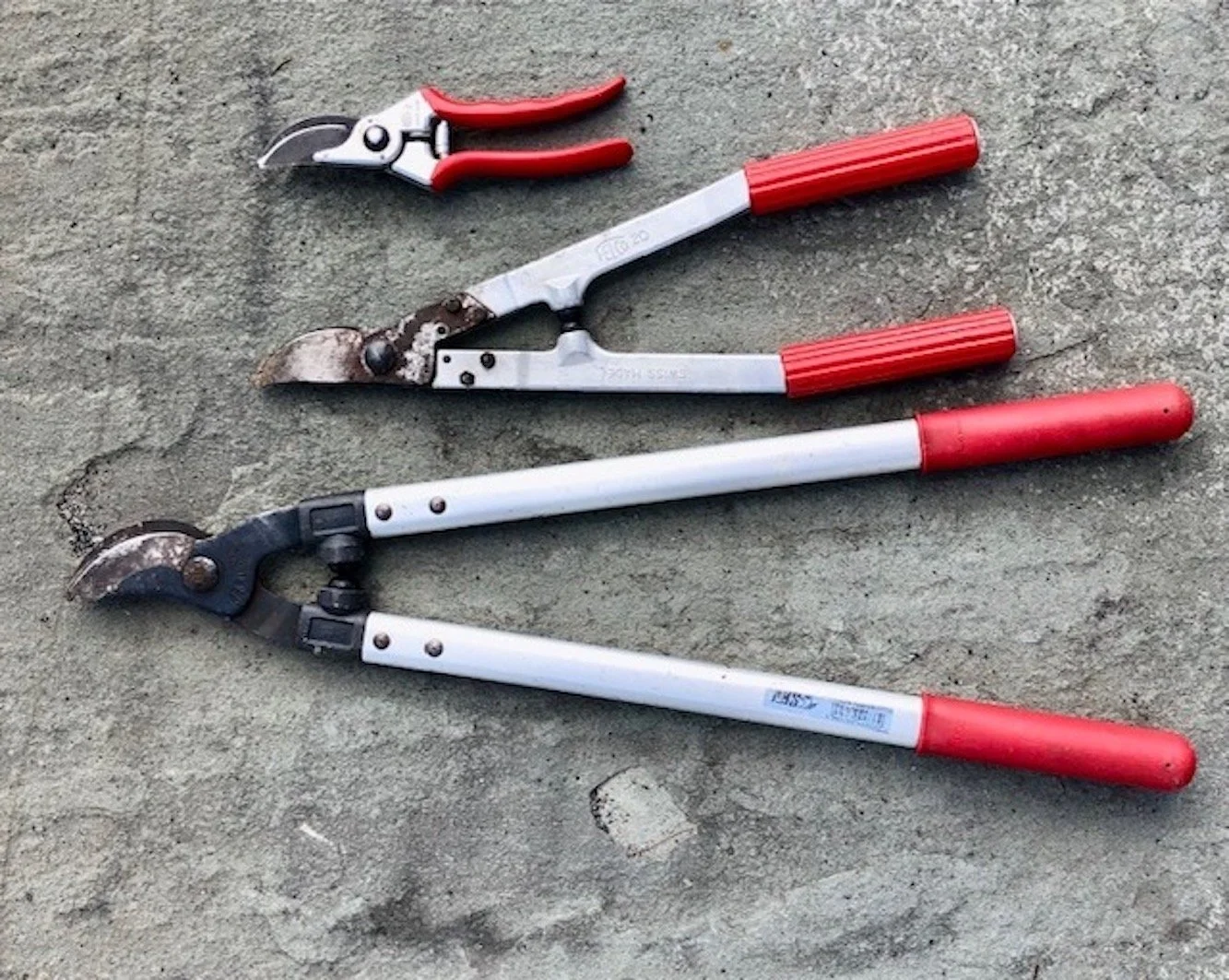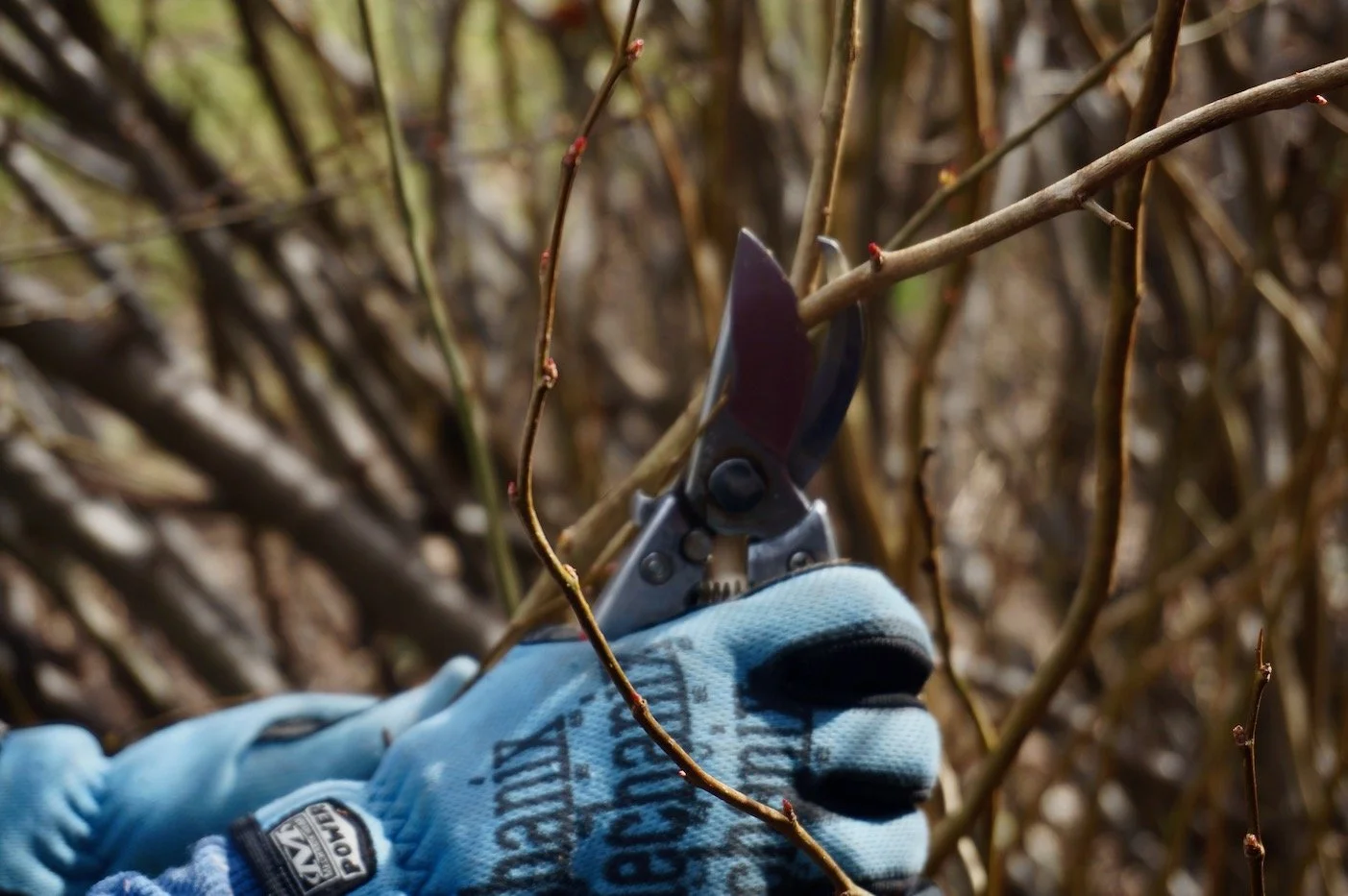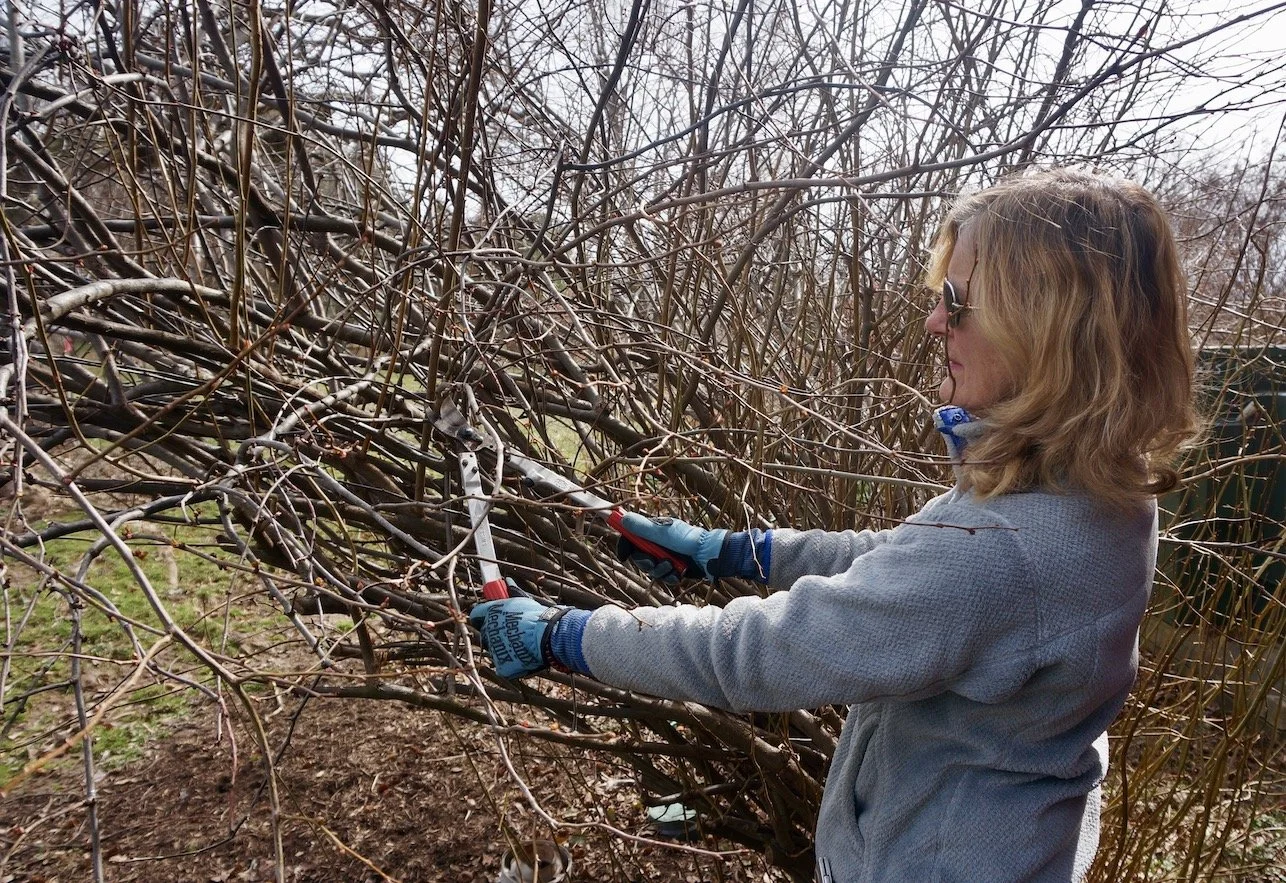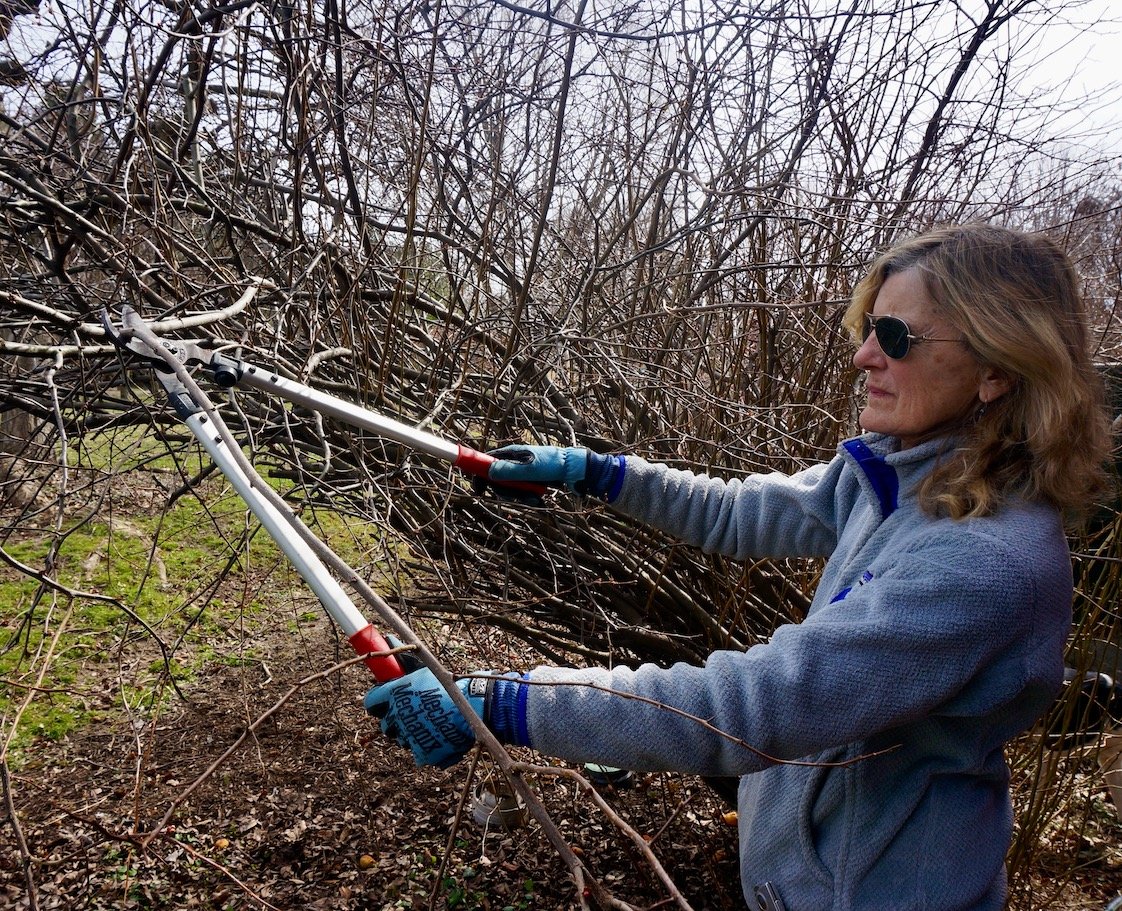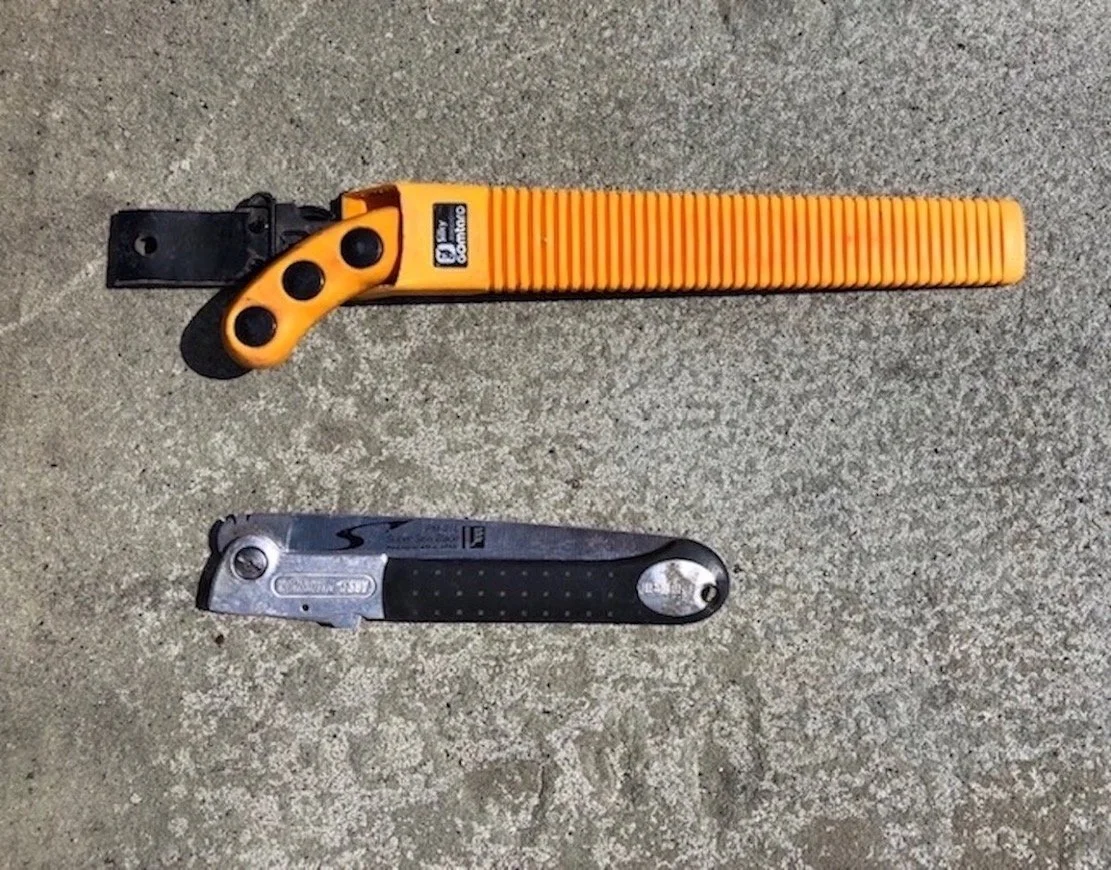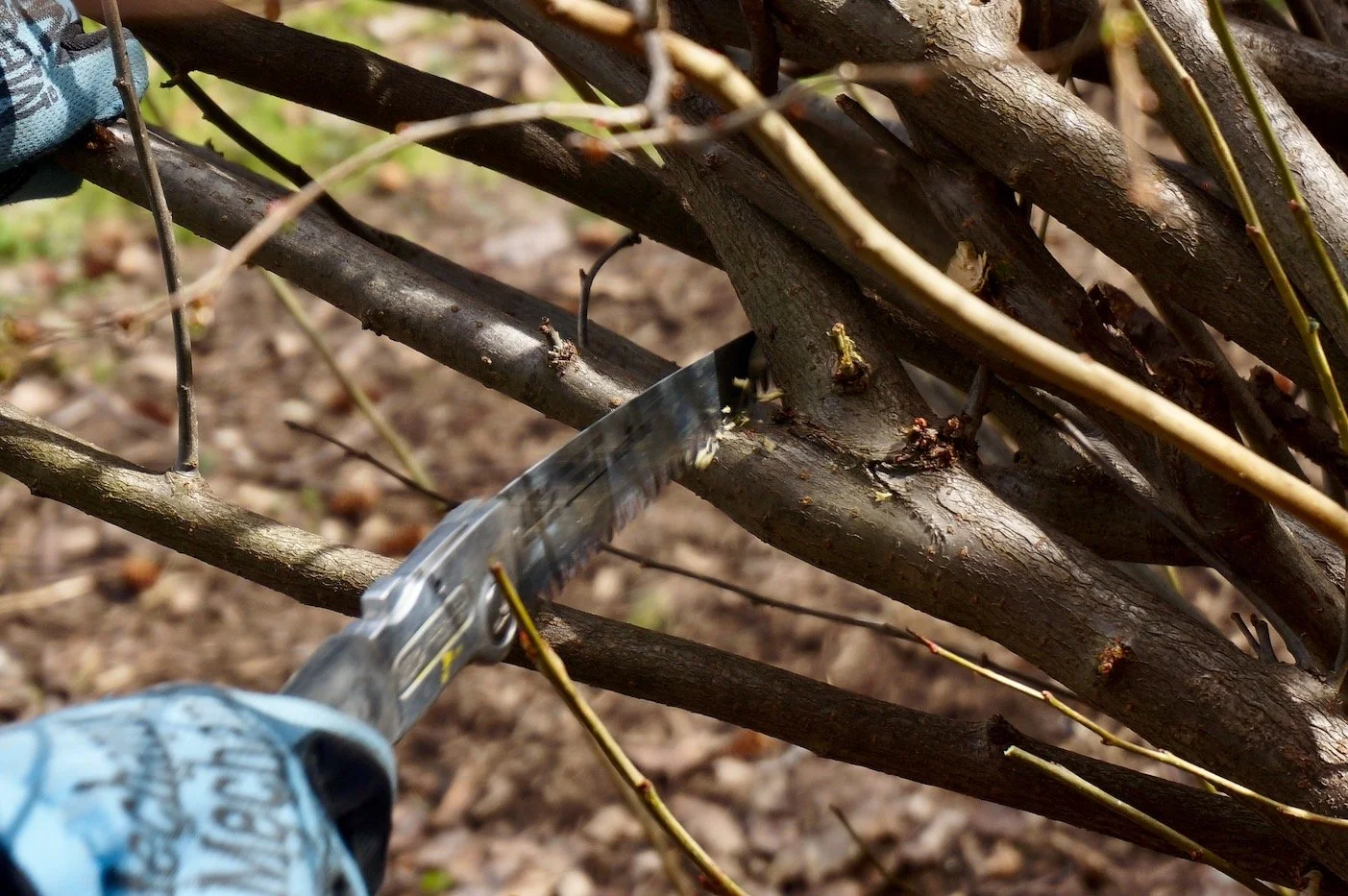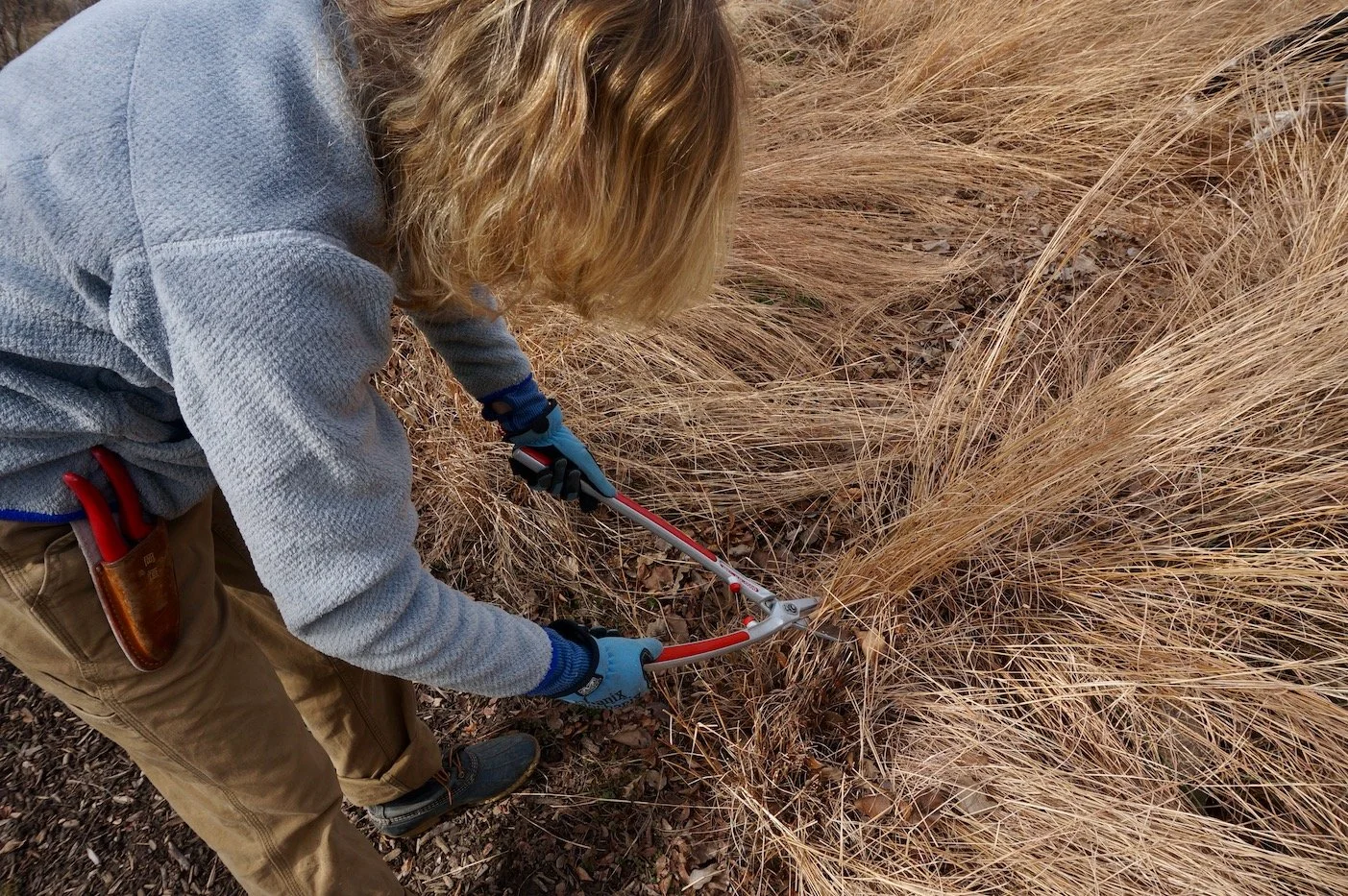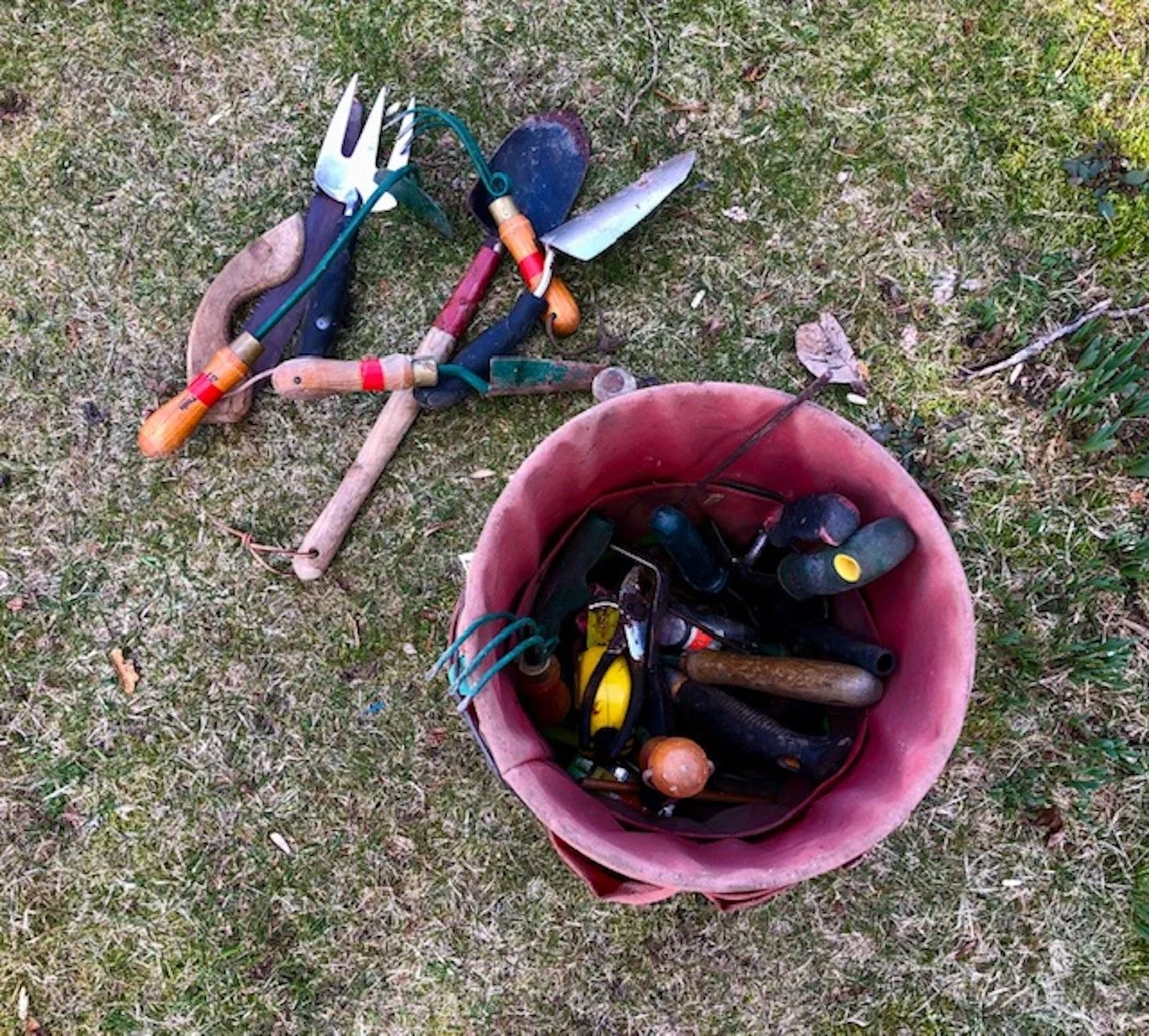Want the sharpest tools in the shed? Here's how to sharpen and choose the best of them
I think we can all agree on one thing - waking up the garden for spring is no day at the beach. And while there might be varying opinions about what to do first and when, one thing is certain - you need good sharp tools. Without them, every chore is an uphill battle - good ones make your work easier and more effective. As early spring involves plenty of clipping and pruning, I’d like to address cutting tools - hand pruners, loppers, saws and hedge clippers.
First, sharpen and clean your tools:
Some of us aren’t aware of or don’t know how to sharpen tools, but really - what’s the point of struggling to cut with a dull one? Sharp pruning tools allow you to make clean cuts without ragged edges. Regular cleaning prevents spreading disease from one plant to another. Well maintained tools are easier to work with and prevent problems like tendonitis.
It’s easy to sharpen and clean tools. You’ll need a spray can of WD-40, a sharpening stone and disinfectant like Simple Green. My friend Nellie Gardner made a great how-to video about sharpening tools that you can watch here.
Invest in high quality pruning tools. This is no place to cheap out, they’re the best money a gardener can spend. Here are several types of tools that every gardener needs.
Hand pruners and loppers:
If I could only have one tool, I’d go with a good pair of hand pruners. This is an investment that pays off in spades, a good pair will save wear and tear on your hands, make your work go faster and help you make nice crisp cuts where it counts. Quality bypass pruning tools with steel blades hold their edge and can be sharpened many times without replacing them. On the other hand, inexpensive hand pruners dull quickly and often stick (ouch!). Anvil pruners don’t have beveled edges and you won’t be able to get a close cut when pruning. They are generally of poor quality and some cannot be sharpened - in my opinion you should just toss them.
Below is my much used collection of Felco and ARS pruning tools. They’re pricey - ranging from around $60 -120 depending on size and where you purchase them. They’ve served me well for many years. One thing I really like about these companies is that you can buy replacement parts - any problem is easy to fix and blades as well as other parts can be replaced.
My friend Nellie prefers ARS pruning tools (below photo). I’d say they are of similar quality and in the same price range, but I remain loyal to my trusty Felcos. See how close you can get into those inner branches? You just can’t beat a nice sharp tool like this for a tidy cut.
Regardless of what brand you choose, make sure it it’s the right size for your hand and feels comfortable when you open and close them.
In the photo below you can see how Nellie is using the short handled lopper to prune inside this massive quince bush. I bought this shorter sized lopper l when I had a bad case of tendonitis and couldn’t use my hand pruners. It doesn’t have as much leverage as the longer one does, but it will give you plenty of control in tight spots. It’s as accurate and almost as easy to use as the smaller Felco 2 pruner.
Long handled loppers below are preferable if you need more muscle for bigger branches. They’re especially handy when you have to reach into the middle of a big shrub and don’t want to get pricked! All of these are bypass varieties and easy to maintain. The size of the lopper you choose should feel comfortable, open and close easily and suit the types of jobs you’ll be doing.
One word of warning - watch out for your fingers after you sharpen any of your pruners. I lopped off the end an index finger once and the emergency room doctor asked me what I used to make such a clean surgical cut. I think I converted him.
Saws:
At times you need something bigger for pruning larger branches. I rely on several types of saws to get the job done. Below are two of my favorites: Silky Gomtaro 240 and an ARS folding saw. Notice that the Gomtaro is protected with a sheath. That keeps it from getting damaged or dull when you aren’t using it. Saw blades can’t be sharpened so they should be replaced periodically. I use mine frequently so I change them once a year. True to the name, Silky saws cut smoothly and easily with sizes to suit any job. If you’re going to do a lot of pruning, investing in a high quality saw like this one is worth the money.
Smaller folding saws like the black and silver ARS variety (above photo) are a must have in your arsenal of tools. They’re a little easier to use in tight areas and easy to carry around in a holster - very handy when you’re climbing up a ladder to prune for a far reaching branch. Both Felco, ARS and Silky offer a wide variety of sizes to suit any need with prices ranging from $75 and up.
Felco offers an inexpensive folding saw for around $30. Blades are inexpensive and easy to replace. If you aren’t going to do a lot of heavy duty pruning, a saw like this would you serve well.
Hedge Clippers:
If you’ve ever used heavy clippers that wobble and stick, you know how clumsy they are. Lightweight short handled clippers sure make it easier on the arms and shoulders when you’re trimming a long hedge!
They have multiple uses, as seen below where Nellie uses her ARS clippers to cut back grasses. These are streamlined and light, with an aluminum forged grip and lightweight steel blades that are replaceable. They cut as smoothly as slicing through butter. There are many sizes and models to choose from with prices that start at around $60 on up. Consider what you’re going to use them for and how much to help determine what’s best for you. Check out weight, comfort, durability of handles and quality of blade.
Note the holster Nellie is wearing on her belt. A must have if you don’t want to risk losing your hand pruners while you’re gardening. How many times have you searched for them through the compost pile?
When you survey your tools this spring think about this - wouldn’t it be better to have a few quality tools rather than a mess of rusty old dull ones? If you’re going to spend time working in your garden, why not make the most of it and buy the best tools you can afford? In the long run, you’ll find that it pays off.

